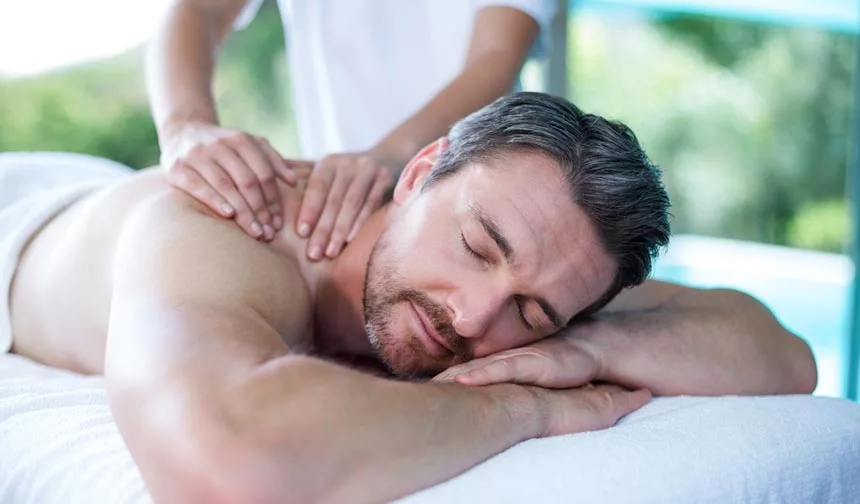8 Great Tips for Pain Management Without Painkillers
Table of Contents
Managing pain without the use of painkillers is becoming increasingly popular as more people seek to reduce their reliance on pharmaceuticals. Whether you’re suffering from an acute injury, chronic pain, or postoperative discomfort, these tips can help you reduce your pain without drugs.
Keep reading to get our 8 tips and a ton more resources on how to get help with pain management that doesn’t involve narcotic medications!
The Relationship Between Chronic Pain and Drug Abuse

Drug abuse is a growing problem in the United States and around the world. Unfortunately, many people who suffer from chronic pain turn to drugs to cope with the pain. Chronic pain is defined as any pain that lasts for more than three months and can range from mild to severe.
This type of pain can be caused by a variety of conditions such as fibromyalgia, arthritis, musculoskeletal conditions, and even cancer pain. It is important to understand the relationship between chronic pain and drug abuse in order to better treat and prevent drug abuse.
One of the most common reasons for drug abuse is the coping mechanism for chronic pain. People with chronic pain often turn to drugs in an effort to numb the pain. This is especially true for those who are unable to access effective pain management therapies.
While these drugs may provide some short-term relief, they can cause more harm than good in the long run. Drug abuse can lead to addiction and other health problems, including an increased risk of overdose.
The relationship between chronic pain and drug abuse is a complex one. Studies have shown that people with chronic pain are more likely to use drugs than those without chronic pain. Additionally, those with chronic pain may be more likely to abuse opioids, which can lead to addiction and overdose.
It is important to understand that people with chronic pain can still lead healthy, productive lives. With the right non-opioid treatment options and support, they can find effective ways to manage pain and live a life free of drug abuse.
Reasons Why People May Want to Relieve Pain Naturally
Pain relief is a ubiquitous goal of medical and holistic treatments alike, and a number of people are seeking out natural methods and alternative therapies to achieve such relief. While some may still opt for over-the-counter or prescription drugs to relieve their pain, many are turning to non-opioid treatments to achieve the same effects.
There are a number of reasons why people may want to relieve their pain naturally. The first reason is that natural remedies often produce fewer side effects than over-the-counter and prescription medications. Many pain medications can cause adverse reactions, such as nausea, constipation, or drowsiness, which can be avoided with natural treatments.
Natural remedies and non-opioid medications are also generally more accessible and less expensive than medications, making them a more feasible option for those without health insurance or the means to purchase more expensive drugs.
Second, natural remedies can often be tailored to the unique needs of the individual. With traditional medications, the dosage and type of medicine are often predetermined by the manufacturer and doctor, with little room for customization. Natural remedies allow people to choose from a range of treatments, such as herbal supplements, essential oils, acupuncture, and massage, and adjust the dosage to suit their individual needs.
Finally, many people believe that natural remedies can be more effective than conventional medications. Herbal supplements, for example, can target specific areas of the body and have been known to provide relief in a safe and natural manner. Essential oils are also believed to be beneficial for relieving inflammation, reducing stress, and improving circulation.
Overall, there are numerous reasons why people may want to relieve their pain naturally. Natural remedies are often safer, more accessible, and more customizable than traditional medications, and they may also be more effective. While natural remedies may not be the right choice for everyone, they can be a beneficial option for those seeking safe and effective pain relief.
Managing Pain in Addiction Recovery

Every day, thousands of Americans are struggling with an addiction to painkillers and opiates. The Center for Disease Control and Prevention (CDC), in partnership with various national institutes, has found that both prescription and illicit opioid abuse have spiked significantly in recent years, with overdose deaths involving these drugs becoming frequent enough to be considered a national crisis – referred to as the opioid epidemic.
Most of these people were originally prescribed painkillers by a doctor for pain management. Many of these people actually do suffer from chronic pain and have now found themselves in a pickle. So what happens when these people want to get sober and no longer use these medications?
For people with chronic pain, pain management in sobriety can be tricky. Especially after someone has relied on them for so long, it just seems like nothing else works. So the obvious first step in learning to manage pain without painkillers is to get rid of the painkillers.
Non Addictive Medications
There are a plethora of other types of medication on the market that include both non-opioid treatment, and non-habit-forming medications that can be used to treat pain. Granted, they may not be as potent as the addictive painkillers, but for someone who is sick and tired and being addicted to their painkillers, they will work just fine to start.
Non-addictive pain medication is used to help manage chronic pain without the risk of becoming addicted or dependent. These drugs are often prescribed to patients who suffer from conditions such as arthritis, fibromyalgia, and nerve pain. While they are not as effective as opioid-based pain relievers, they can provide relief without the potential for addiction.
Non-addictive painkillers are typically divided into two categories: nonsteroidal anti-inflammatory drugs (NSAIDs) and acetaminophen. NSAIDs, like ibuprofen and naproxen, work by blocking the production of hormones in the body that cause inflammation and pain. Acetaminophen includes medications such as Tylenol and works by reducing swelling and blocking pain signals from reaching the brain.
Looking Outside of Narcotics
In addition to these two types of non-opioid pain medications, there are also other medications available for pain management. These include anticonvulsants, which can help reduce nerve pain; antidepressants, which can help relieve chronic pain; and muscle relaxants, which can help reduce muscle spasms.
The decision of which non-addictive painkiller to use should be made on an individual basis. Factors such as age, medical history, and severity of pain will all be taken into account when determining the best course of action. It is important to discuss all of the potential risks and benefits of any pain management drug with your doctor.
Non-addictive painkillers can provide relief without the risk of dependency or addiction. However, it is important to understand that these drugs are not a substitute for other forms of treatment. Regular exercise and physical therapy can help to reduce pain and improve quality of life. If pain persists, it is important to seek medical attention to determine the cause and find the most effective treatment plan.
Joining a Recovery Program

Addiction recovery programs are designed to help those struggling with addiction recognize the harmful effects of their substance abuse and learn how to cope with their cravings and triggers. They provide a safe, supportive environment for individuals to explore their feelings and develop strategies for a successful recovery.
When enrolling in an addiction recovery program, individuals can expect to receive a comprehensive assessment of their addiction. This assessment allows the program to develop an individualized treatment plan tailored to their needs. Treatment plans usually involve a combination of individual and group therapy, medication, and life skills training.
This, of course, may include ways to help you manage your pain while recovering from an addiction to opioids or other habit-forming painkillers. You may work with various occupational therapists and pain physicians to figure out a recovery plan that works for you. The FInd Addiction Rehabs team can help you find treatment programs nationwide that can address all of your recovery needs and help you achieve full mind and body wellness.
8 Pain Management Techniques Without Drugs
For people who struggle with pain management and want to get off of painkillers, there are countless ways to do so. It is a real option, even though it might seem scary at first. Yes, it will take a little more willingness and a little more research, but in the end, adding any of these natural and healthy tools into your life will not only help you ease the pain but will also help you feel healthier overall.
1) Eating Healthy

When you fuel your body with fats, sugars, carbs, caffeine, and energy drinks without exercising them off, this can be a recipe for trouble. Non-nutritional foods lead to inflamed muscles and joints, fatigue, digestive issues, liver damage, weight gain (not good for those same inflamed joints), and just an overall constant feeling of lethargy. Eating foods that are good for you keeps your organs, muscles, blood flow, and heart rate in tip-top shape, which will help prevent flare-ups of muscle pains and inflammation.
2) Exercise
Exercise can be beneficial for more than just weight loss and muscle gain. Many people with chronic conditions find that lightly exercising a painful area can help reduce the pain they feel. It can also help lower blood pressure, especially when combined with relaxation exercises. This doesn’t just mean pumping weights at the gym, especially if your chronic pain makes it pretty much impossible to do so.
However, it is important to do some sort of exercise every day, as it increases endorphins, boosts blood flow and circulation to painful areas, creates energy, decreases depression, and reduces fatigue. Try some of these gentle forms of exercise daily to help with pain management.
- Swimming
- Light Walking
- Yoga
- Kayaking
- An Elliptical or bicycle machine
- Stretching
- Tai-chi
- Everyday Activities (gardening, house cleaning, walking the dog, etc)
These can all be done in combination with meditation and mindfulness techniques, such as deep breathing and other relaxation techniques, which can help with stress management, being more in tune with your everyday life, and several other benefits.
3) Acupuncture

Acupuncture is a centuries-old form of alternative medicine that involves inserting thin needles into the skin at specific points in order to stimulate the body’s natural healing abilities. Acupuncture has been used for centuries to treat a variety of ailments, from chronic pain to depression; and many people who suffer from chronic pain have turned to acupuncture for relief.
The theory behind acupuncture is that the needles stimulate the body’s meridian points, or energy pathways, to restore balance and improve the flow of energy through the body. This energy is believed to be the key to health and well-being, and when it is blocked, physical and mental health issues can arise.
Stimulating the meridian points with acupuncture helps to unblock this energy and restore balance. The use of acupuncture for pain relief has been studied extensively in recent years, and the results have been promising. Research suggests that acupuncture can help with relieving pain and inflammation, removing nerve blocks, improving sleep quality, regulating the nervous system, and even reducing the need for medication.
It can be used to treat a variety of conditions, including lower back pain, neck pain, chronic headaches, and arthritic pain. When it comes to treating pain, acupuncture is believed to work by releasing endorphins – the body’s natural painkillers – and by inhibiting the pain signals that are sent from the brain to the body. It is also thought to stimulate the body’s own healing abilities and help reduce inflammation.
4) Physical Therapy
With many chronic pain management issues, people suffer from an injury that occurred in the past. Physical therapy is a great way for a person to receive professional treatment to help cure the pain site permanently. Not to mention, your physical therapist can also teach you methods to properly stretch and what sort of exercises to do at home.
Physical therapy may be helpful for spinal cord stimulation, managing chronic low back pain, and reducing muscle tension. It can improve function in areas recovering from old injuries, and provide long-term relief through minor physical activity and exercise therapy.
5) Massage Therapy

Massage therapy has been used for centuries as a natural way to relieve pain. It is an effective tool for managing chronic pain, reducing inflammation, and improving physical and mental health. Massage therapy is a type of hands-on therapy that is used to manipulate the soft tissues in the body, such as muscles, tendons, and ligaments.
Massage therapy is known to be a great way to reduce pain. It can be used to relieve both chronic and acute pain, as well as reduce inflammation. Massage therapy can also help improve the range of motion and flexibility, which can help reduce the risk of further injury. Massage therapy can also help with stress and anxiety, both of which can lead to physical pain.
Massage therapy can be used for many types of pain, including muscle pain, joint pain, and headaches. People with conditions such as fibromyalgia, arthritis, and chronic fatigue syndrome can also benefit from massage therapy. Some studies have even found that massage therapy can help reduce pain associated with cancer treatment.
When it comes to massage therapy, there are a few different types to choose from. Swedish massage is the most common type, and it involves long strokes, kneading, and friction to relax muscles and relieve pain. Other types of massage include deep tissue massage, which is used to target deeper layers of muscle, and trigger point massage, which is used to release tight knots in the muscles.
6) Cryotherapy
Cold Therapy is now being performed all over the country and is similar to taking ice baths or using a cold compress on a sprain, sore muscle, or another injury. They have facilities that are essentially the opposite of a sauna, where people immerse their bodies in a very low-temperature machine that reduces all inflammation and pain.
7) Electrical Stimulation
Electrical stimulation, also known as electrotherapy, is a type of physical therapy used for pain relief. It involves applying an electrical current to the body in order to stimulate the nerve endings and reduce pain. Electrotherapy can be used to treat a wide range of conditions, including chronic pain, musculoskeletal injuries, neurological conditions, and post-operative pain.
Electrical stimulation works by sending electrical pulses through electrodes placed on the skin. These pulses stimulate the nerves and can help reduce pain by blocking pain signals from being sent to the brain. Electrical stimulation can also help to increase blood flow, reduce inflammation, and promote healing.
The most common type of electrical stimulation used for pain relief is transcutaneous electrical nerve stimulation (TENS). TENS is a non-invasive, drug-free treatment that uses low-voltage electrical current to stimulate the nerves and reduce pain. It can be used to treat both acute and chronic pain.
Another type of electrical stimulation used for pain relief is neuromuscular electrical stimulation (NMES). NMES uses a higher voltage current that is applied directly to the muscles. By stimulating the muscles, NMES can help to reduce pain and prevent muscle spasms, as well as increase strength and flexibility.
Radiofrequency ablation can also help with relieving pain and treating various conditions that may cause individuals to feel pain more frequently than they would like. Electrical stimulation can be used in combination with other treatments to maximize pain relief. It is often used in conjunction with physical therapy, massage, and other forms of manual therapy.
8) Herbal Remedies

Before the boom of Western medicine, people had been using herbs to treat every ailment out there, which is actually where painkillers originated from. However, using supplements can often be an excellent and healthy way to ease muscle and joint pain.
For example, fish oil, turmeric, and vitamin D have been known to reduce inflammation. Ginger helps with digestive issues if you are someone who struggles with Crohn’s. Melatonin, Chamomile, and Ashwagarma are all natural sedatives that can aid in relaxation and sleep, and none of these herbs are dangerous or habit-forming.
Freedom From Addiction: Found Here
If you or a loved one is suffering from alcoholism or addiction, understand that you are not alone in your struggles! If you are ready to change your life and finally be free of your addiction, then Find Addiction Rehabs can help.
We give you the jump start to recovery you need by aligning you with the right provider to meet your needs among our nationwide, accredited partner facilities. Give yourself a break and reach out now to start your sobriety journey today!
Anna M. joined Find Addiction Rehabs with extensive experience in the field of addiction treatment. As a former Nurse Practitioner in Miami, she found her passion for addiction treatment when a family member was lost to his disease. With each article and resource, she hopes to save other families from experiencing the anguish of a loved one’s passing due to drinking or drugs.


